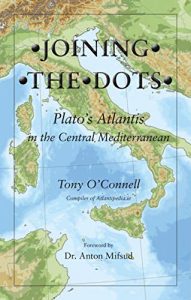Mexico
Abraham
Abraham is generally accepted as the Hebrew patriarch of the Abrahamic religions, Judaism, Christianity and Islam, possibly living in the 2nd millennium BC. The name Abraham and its variants has been identified(a) in many cultures, although the existence of Abraham as a real historical person has been disputed.
Nevertheless, there have been a number of efforts to connect Abraham with the religion of ancient India(b) . The most publicised proponent of this view is Gene Matlock who offered his evidence in a paper titled Who was Abraham?(c)
He begins this document with three citations from ancient sources;
“In his History of the Jews, the Jewish scholar and theologian Flavius Josephus (37-100 A.D.), wrote that the Greek philosopher Aristotle had said: “…These Jews are derived from the Indian philosophers; they are named by the Indians Calani.” (Book I:22.)
Clearchus of Soli wrote, “The Jews descend from the philosophers of India. The philosophers are called in India Calanians and in Syria Jews. The name of their capital is very difficult to pronounce. It is called ‘Jerusalem.'”
“Megasthenes, who was sent to India by Seleucus Nicator, about three hundred years before Christ, and whose accounts from new inquiries are every day acquiring additional credit, says that the Jews ‘were an Indian tribe or sect called Kalani…'” (Anacalypsis, by Godfrey Higgins, Vol. I; p. 400.)”
Matlock believes that India ruled our prehistoric world including parts of America and furthermore. that Atlantis was located in South-East Mexico at San Lorenzo Tenochtitlan [0472]. In an attempt to link his Mexican location with Plato’s description of Atlantis, Matlock contends that the ‘elephants’ mentioned by him were the long-snouted tapirs of Meso-America!(e) Furthermore, he claims that there was a connection between India, the Phoenicians, Atlantis and Mexico.
However, Matlock by way of clarification added “My readers should know that the ‘Atlantis’ described in this book may not be the same as Plato’s ‘Atlantis’. I’m just proving that there was once a part of the world called ‘Atlantis’ – that a part of Mexico once had the Sanskrit name Atlán, Tlan or Toltán, whose citizens were known as Atlantecas and Atlantl.” He then continues with “if my ‘Atlantis’ is not the real ‘Atlantis’ no one will ever find the one Plato mentioned.”
Matlock’s widely quoted internet article(c) begins with the identification of Abraham and his wife Sarai with the Hindu god Brahma and his wife Saraisvati.
In 2000, Matlock published Jesus and Moses Are Buried in India, Birthplace of Abraham and the Hebrews[0473], in which he develops this theme further.
A book supporting Matlock by the controversial Sri G. Ananda (Gregory Alexander) entitled Brahma: The God of Abraham [1187] was published in 2014. However, the idea is hotly debated on the internet by all interested parties, Christian, Muslim and Hindu.
Roger M. Pearlman tackled the subject of Atlantis in Plato’s Atlantis Legend Resolution: Abraham is the Real Atlas [1596]. Apart from the unexpected identification of Abraham, he also equates Hercules with the biblical Samson and places the Pillars of Hercules at Gaza. Disturbingly, he suggests that Sodom can be identified as Atlantis. Then, for good measure, he maintains that Göbekli Tepe was founded by Noah‘s family!
Jason Colavito had a critical view(d) of the recent (2017) Turkish documentary, supported by the government, which claims that Göbekli Tepe was built by Telah, Abraham’s father, and destroyed by Abraham.
(a) So Many Abrahams by Hiberia (archive.org)
(b) WELCOME TO AUM-SHALOM.COM (archive.org)
Lopateki, M. De
M. De Lopateki was an occasional contributor at the end of the 19th century to the now defunct Los Angeles Herald. In an article(a) on January 5th 1896 entitled “True Atlantis” in which he disagreed with details of Ignatius Donnelly’s then recently published, Atlantis. Donnelly proposed the Azores as remnants of Atlantis, while Lopateki argued that the total lack of any traces on the islands of a ‘high culture’ would seem to contradict Donnelly.
However, Lopateki proposed that the civilisations of Mexico and Central America were superior candidates for the title of ‘Atlantis’.
(a) https://cdnc.ucr.edu/cgi-bin/cdnc?a=d&d=LAH18960105.2.47
Bernard, Jean-Louis
Jean-Louis Bernard (1918-1998) was a French novelist with a passion for  the esoteric and ancient history,>which can be deduced from this bibliography(b).< He is the author of L’Atlantide des géants[0143] in which he touches on the Guanches of the Canaries, Bimini, Crete and Mexico.
the esoteric and ancient history,>which can be deduced from this bibliography(b).< He is the author of L’Atlantide des géants[0143] in which he touches on the Guanches of the Canaries, Bimini, Crete and Mexico.
Earlier in 1978, he had authored a science fiction dictionary, Les archives de l’insolite, in which, before Richard Firestone, he commented on a catastrophic period in the earth’s prehistory around 10,000 BC and was quoted by Michel-Alain Combes(a).
“A series of catastrophes which took place around the year 9,000 or
10,000 before our era,which affected the whole planet,and about which
Tradition and modern science are in agreement. Let’s list these
cataclysms: in Europe, the end of the last ice age, maybe as a
consequence of the shifting of the pole towards its present position in the
North; in compensation, a drying up of the Sahara was started or
accelerated; probable end of the archipelago of Atlantis; in East Africa,
a sudden sur-elevation of mounds,and disappearance of an interior sea
(at the sources of the Nile) and of an archipelago (Pount) in the Indian
Ocean; possible sur-elevation of the Andes,with disappearance of
archipelagos in the Pacific Ocean (and isolation of the famous Easter
Island)…”
(a) https://www.2008-paris-conference.org/mapage9/macombes-younger-dryas-event-1-xx.html.pdf
>(b) Jean-Louis Bernard (1918-1998) (bnf.fr)<
Two Crops a Year
Two Crops a year is one of the characteristics of Atlantean agriculture according to Plato (Critias 118e).
The North African climate was slightly wetter at the time of Hannibal (2nd & 3rd cent. BC), later, Algeria, Egypt and particularly Tunisia, were the ‘breadbasket’ of Rome(b) and may also have been so for the Atlanteans who earlier had control from North Africa to Tyrrhenia! Even today well-irrigated plains in Tunisia can produce two crops a year, usually planted with the autumnal rains and harvested in the early spring and again planted in the spring and harvested in late summer. The Berbers of Morocco produce two crops a year—cereals in winter and vegetables in summer(a).
It is worth noting that Mago, the Carthaginian author of a 28-book work on the agricultural practices of North Africa. had his books brought to Rome after the destruction of Carthage in 146 BC, where they were translated from Punic into Latin and Greek and were widely quoted. It is clear that Mago’s work was a reflection of a highly developed agricultural society in that region, a description that could also be applied to Plato’s Atlantis!
Although two crops are possible annually in other parts of the world, I must emphasise that North Africa is the only part of the Atlantean territory referred to by Plato (Timaeus 25b) that was so productive and continued to be so until the Romans, who depended on it along with Egypt to feed Rome.
>James Bailey who advocated an American location for Atlantis refers [150.63] to the irrigation systems of ancient Mexico and the ability to raise three crops a year in Mexico and the coastal plains of Peru as all echoes of Plato’s description of Atlantis.<
Gemelli Careri, Giovanni Francesco (L)
Giovanni Francesco Gemelli Careri (1651-1725) was a famous Italian ‘adventurer’ who travelled the  world using public transport. After his first trip across Europe, he later decided to undertake an around-the-world journey, which took him five years and was recorded in a six-volume work entitled Giro Del Mondo. Volume VI is concerned with Mexico where Careri studied its pyramids that led to his conclusion that the early inhabitants of America and the ancient Egyptians were both descended from inhabitants of Atlantis. A 1700 edition of Volume VI is available online(a).
world using public transport. After his first trip across Europe, he later decided to undertake an around-the-world journey, which took him five years and was recorded in a six-volume work entitled Giro Del Mondo. Volume VI is concerned with Mexico where Careri studied its pyramids that led to his conclusion that the early inhabitants of America and the ancient Egyptians were both descended from inhabitants of Atlantis. A 1700 edition of Volume VI is available online(a).
Gilbert & Cotterell in The Mayan Prophecies[0327] contended that Careri’s views on Atlantis originated from his friendship with Don Carlos de Sigüenza y Góngora.
(a) https://books.google.ie/books?id=7e0UAAAAQAAJ&printsec=frontcover&source=gbs_ge_summary_r&cad=0#v=onepage&q&f=false (Italian)
Dupaix, Guillermo (t)
Guillermo Dupaix (1750-1817/8) was born in the Duchy of Luxembourg and became a captain in the service of the King of Spain made made three Royal expeditions to Mexico in 1805, 1806 & 1807 to study the monuments of that country. He was accompanied by José Luciano Castañeda a professor of drawing and architecture with the National Museum, whose drawings in the expeditions’ reports were considered more valuable than Dupaix’s text.
Dupaix concluded that the monuments at Monte Alban, El Tajin and Palenque had been built by the citizens of Atlantis.
Atl
Atl as a constituent part of the name ‘Atlantis’ is frequently associated with the Mexican Nahuatl word for water. However, Antoine Gigal, the Egyptologist, in a 2011 interview(a), pointed out that ‘atl’ is also the Egyptian word for canal! Her intention was to get off the subject of Atlantis, but she may have inadvertently given additional ammunition to those that claim some cultural links between ancient Egypt and Mesoamerica.
In the seventeenth century, Olof Rudbeck proposed that ‘Atle’ the name of an ancient Swedish king was in fact a variant of Atlas. This tenuous link combined with some other coincidences encouraged Rudbeck to claim Sweden as Atlantis.
All this highlights the need for caution when using single words to bolster any theory; similarity should not be confused with identity.
(a) http://projectcamelotproductions.com/interviews/antoine_gigal/antoine_gigal.html
Kolb, Dustin
Dustin Kolb is a German researcher who has opted for a Mexican location for Atlantis(a)(b). Somehow or other he arrived at the conclusion that Plato’s description of Atlantis could only have been a reference to America. His then ‘reasoned’ that since the capital of Atlantis was in the middle of Plato’s island, this must have been a reference to Central America! Moving steadily along, he next decided that the concentric rings of the Atlantean capital could only have been an impact crater. He finally settled on the region of Lake Texcoco in the Valley of Mexico as the original home of Atlantis.
His idea of Atlantis in Mexico is not original, having been first proposed over a century earlier by Louis de Launay and has Gene Matlock as arguably its best known modern proponent. I was not convinced by Kolb as he failed to explain either why or how an attack could be launched from Mexico across the Atlantic to the eastern Mediterranean. He also fails to explain how a Mexican Atlantis had control of the western Mediterranean without leaving any archaeological evidence to support such a contention. Finally, his explanation that the ‘elephants’ recorded by Plato were probably “bulls and bison” is, in my opinion, pathetic.
(a) https://atlantisforschung.de/index.php?title=Atlantis_lag_in_Mexiko (German)
(b) https://www.academia.edu/3385512/Atlantis_in_Mexico?email_work_card=view-paper (Ger)
Genovés, Santiago (L)
Santiago Genovés Tarazaga (1923-2013) was a Spanish anthropologist with a great interest in pre-Columbian Mexico.  He was part of the Ra I and Ra II expeditions led by Thor Heyerdahl that crossed the Atlantic in a reed boat at the second attempt. He has written many books and essays on scientific subjects as well as a number of papers of literary criticism. But is probably best known for a joint paper with Romeo Hristov published in 2000 in Ancient Mesoamerica(a) in which they identified a terracotta figurine discovered in 1933 in Mexico as clearly Roman adding to the ever growing body of evidence for probable pre-Columbian trans-Atlantic contacts. The existence of such early oceanic travel is fundamental to a number of Atlantis related theories, particularly those that promote Egypt as a colony of a MesoAmerican Atlantis or where a mid-Atlantic Atlantis is claimed to have provided a stepping-stone between the Old and New Worlds.
He was part of the Ra I and Ra II expeditions led by Thor Heyerdahl that crossed the Atlantic in a reed boat at the second attempt. He has written many books and essays on scientific subjects as well as a number of papers of literary criticism. But is probably best known for a joint paper with Romeo Hristov published in 2000 in Ancient Mesoamerica(a) in which they identified a terracotta figurine discovered in 1933 in Mexico as clearly Roman adding to the ever growing body of evidence for probable pre-Columbian trans-Atlantic contacts. The existence of such early oceanic travel is fundamental to a number of Atlantis related theories, particularly those that promote Egypt as a colony of a MesoAmerican Atlantis or where a mid-Atlantic Atlantis is claimed to have provided a stepping-stone between the Old and New Worlds.
(a) https://www.dallasobserver.com/news/romeos-head-6407887
Mexcaltitán
 Mexcaltitán is a small inhabited island in North West Mexico that is laid out with concentric streets intersected by two perpendicular avenues(a). Some locals compared its layout to that of old maps of Tenochtitlán the legendary capital of the Aztecs, which in turn has been proposed as having a connection with Atlantis. The idea is totally fanciful and does not stand up to the most cursory examination.
Mexcaltitán is a small inhabited island in North West Mexico that is laid out with concentric streets intersected by two perpendicular avenues(a). Some locals compared its layout to that of old maps of Tenochtitlán the legendary capital of the Aztecs, which in turn has been proposed as having a connection with Atlantis. The idea is totally fanciful and does not stand up to the most cursory examination.
(a) https://www.briannissen.com/ (see under texts)
